Snapshot
- 298kW/475Nm 3.0-litre twin-turbo VR30 V6
- Choice of six-speed manual or 9-speed auto
- Sport and Performance trim levels outlined
UPDATE, May 11, 2022: Australian pricing for the new 2023 Nissan Z has now been announced. Get all the details at the link below.
The story to here
Nissan certainly wasn’t kidding when it stated that the production 2023 Z would stay faithful the design of the Z Proto design study. It’s almost indistinguishable, and that is a very good thing.
Rather predictably, natural aspiration has been replaced by a 3.0-litre twin turbo setup, good for 298kW at 6400rpm, with a hefty torque bump to 475Nm between 1600 and 5600rpm. By way of comparison, the outgoing 370Z Nismo, with its 3.7-litre atmo powerplant manages 253kW and 371Nm.
Nissan hasn’t released performance figures yet for its rear-drive coupe, estimating a 15 per cent acceleration boost, but we’d conservatively expect mid-fours to 100km/h.
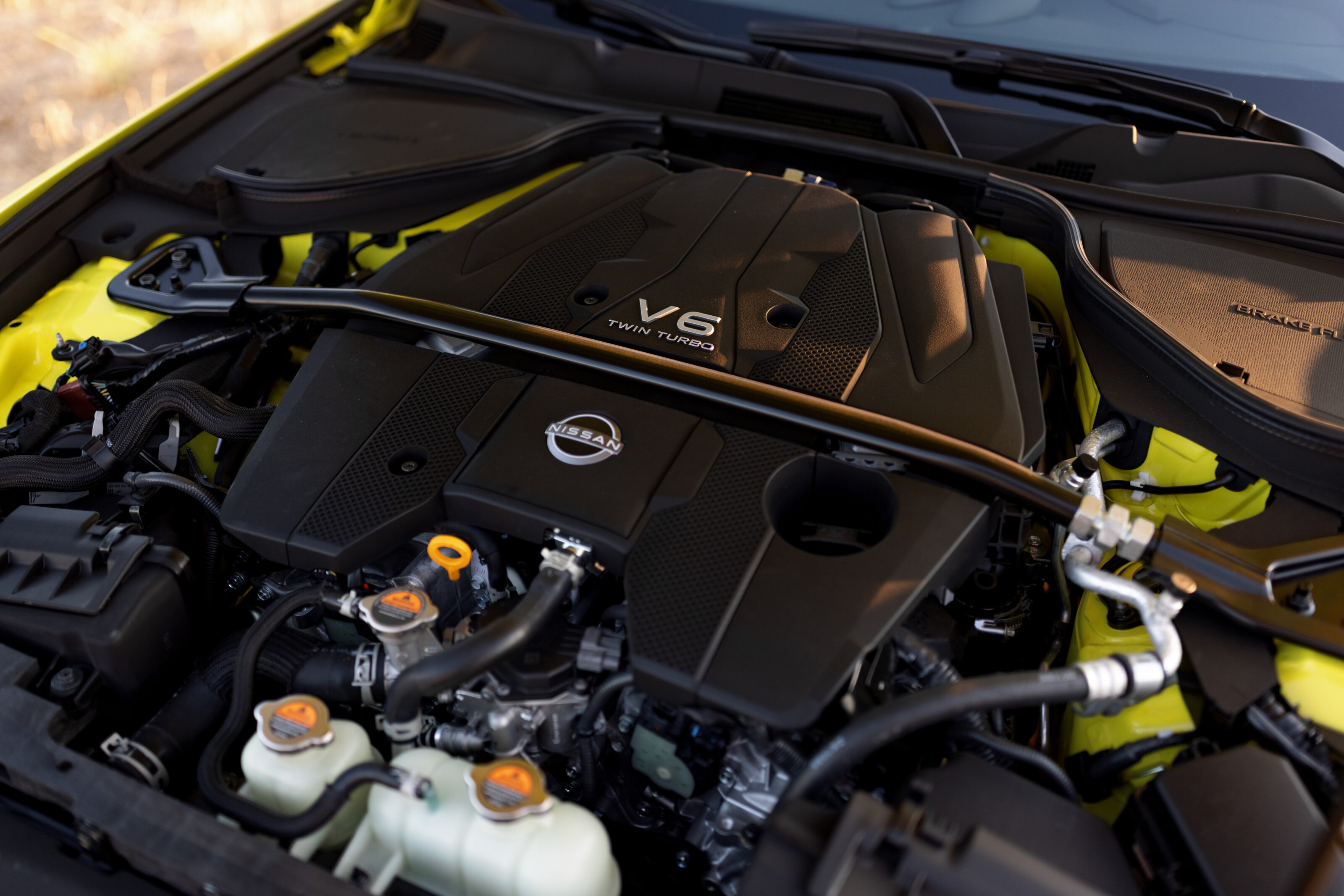
The engine features two small-diameter turbochargers to reduce lag, while an electronic variable valve timing (e-VVT) intake valve system also helps throttle response and fuel efficiency.
The 2997cc VR30DDTT powerplant is much the same as that used in the Infiniti Q50/Q60 twins, appearing on Wards’ 10 Best Engines list in 2017 and 2018.
“Simply put, our goal is to make this the best Z yet, period. With each generation, we raise the bar, pushing the limits of Z and continuing to tap into the human instinct for that next thrilling journey,” said Hiroshi Tamura, chief product specialist of the new Z.
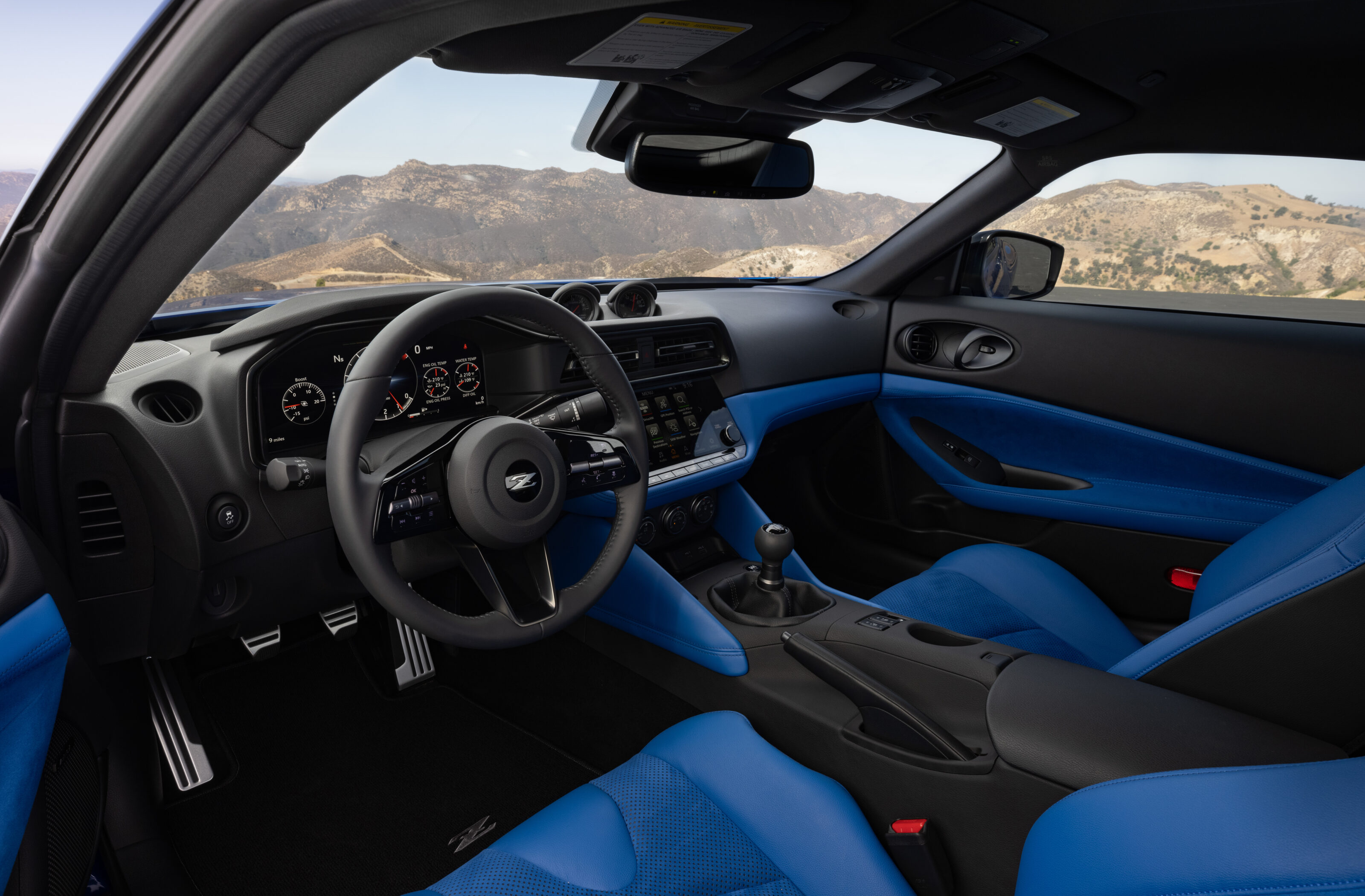
Buyers get a choice between a six-speed manual and a nine-speed automatic transmission. The 6-speed close-ratio manual transmission features an Exedy high-performance clutch, a carbon fibre propshaft and launch control.
Go with the auto and launch control is also featured, alongside aluminium paddle shifters of the same design found on the GT-R.
The auto ‘box also features standard and Sport drive modes.
Nissan has beefed up body rigidity, fitted an electronically assisted power-steering set-up and widened the tyres on both the Sport and Performance trim levels announced for the US market. It’s likely that when the car comes to Australia, these trims will be rationalised to a single model, which will probably take its cue from the US-market Performance variant.
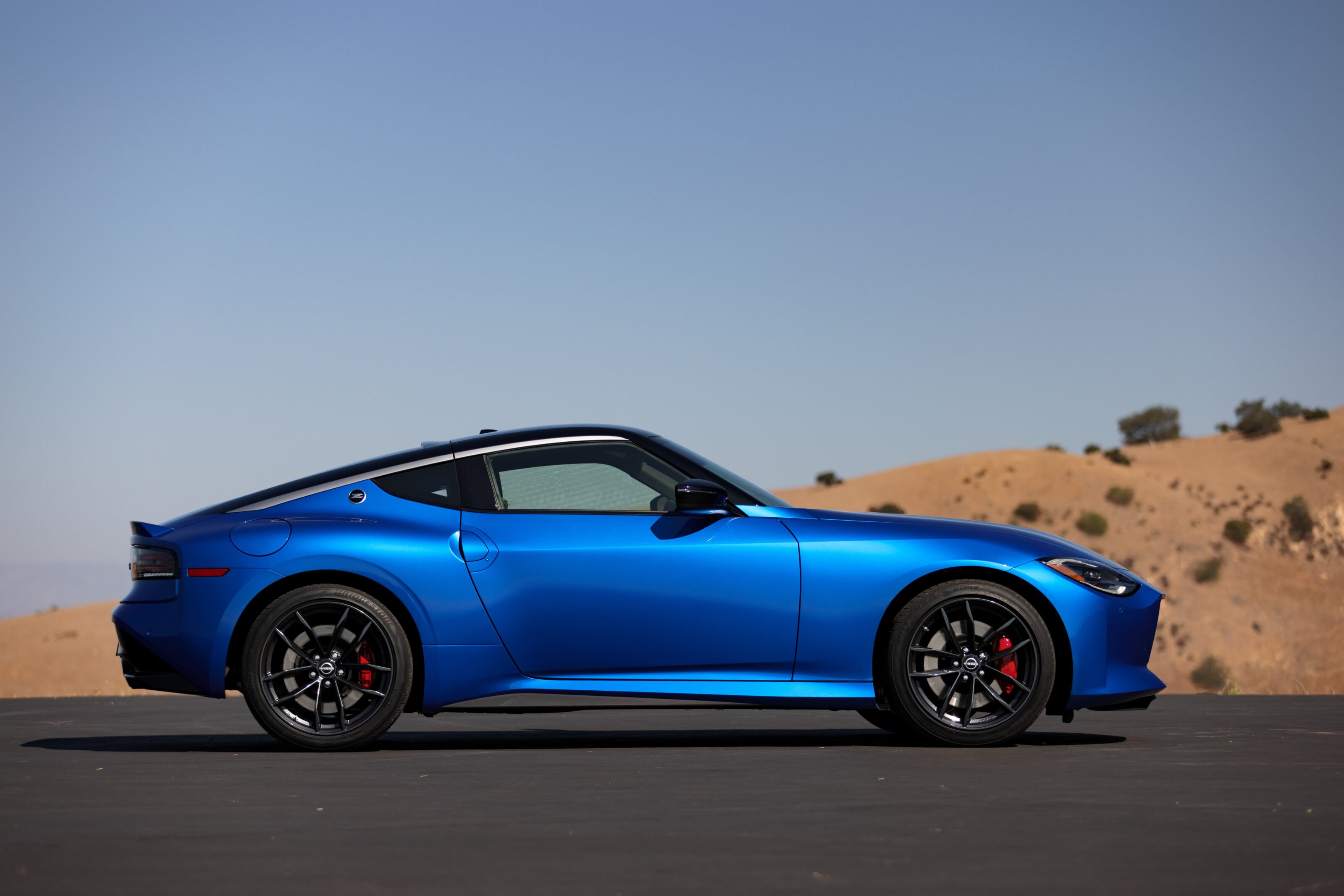
Larger passive dampers are fitted to the front double wishbone suspension, which features an increased caster angle for better stability. The rear is a multilink set-up, and the Performance trim gets a mechanical clutched LSD. Another feature unique to the Performance trim is a larger rear spoiler to increase downforce over the rear axle.
The Sport variant is fitted with dark-finished 18-inch aluminium-alloy wheels with Yokohama ADVAN Sport rubber, while the Performance sits on 19-inch RAYS forged aluminium-alloy rims with Bridgestone Potenza S007 hoops.
The new Z rides on a 2550mm wheelbase, exactly the same as the outgoing 370Z which suggests that the underpinnings are a carryover of the FM platform whose roots can be traced back to the 2001 V35-series Skyline.
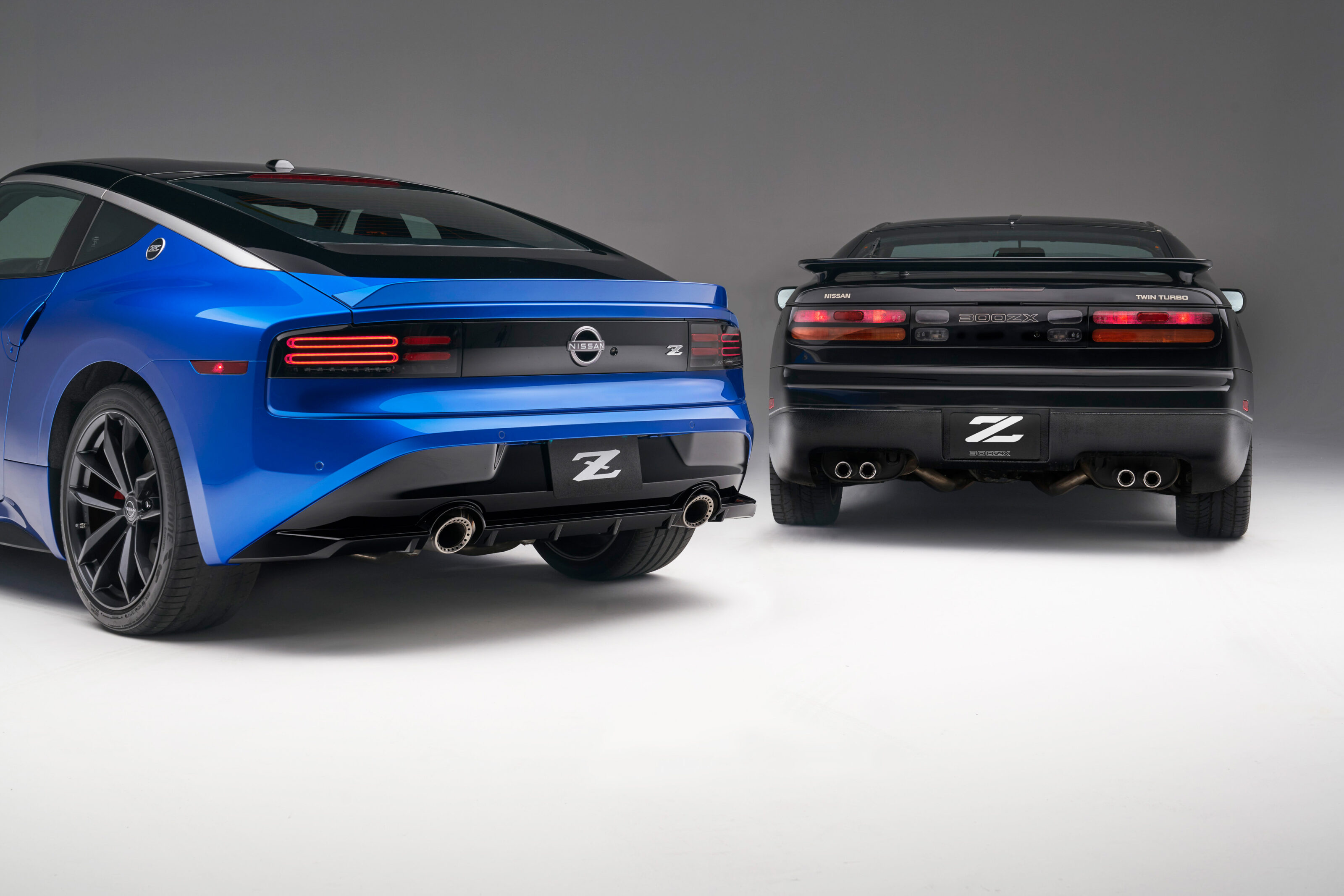
For many, the styling will be enough to sell them on the idea of the Z. The cab-back silhouette is faithful to its Z-car heritage, with a long bonnet, teardrop glasshouse and a squat rear stance.
The design team was headed up by the irrepressible Alfonso Albaisa, Nissan’s global head of design and a Z-car fanatic. “We found ourselves gravitating towards the sketches that touched the high points of certain decades while remaining true to our vision of the future,” said Albaisa.
“Ultimately, we created a Z that travels between the decades while being completely modern.” While not all of the car is what we’d describe as completely modern, maybe that’s not such a bad thing where the Z-car’s niche is concerned.
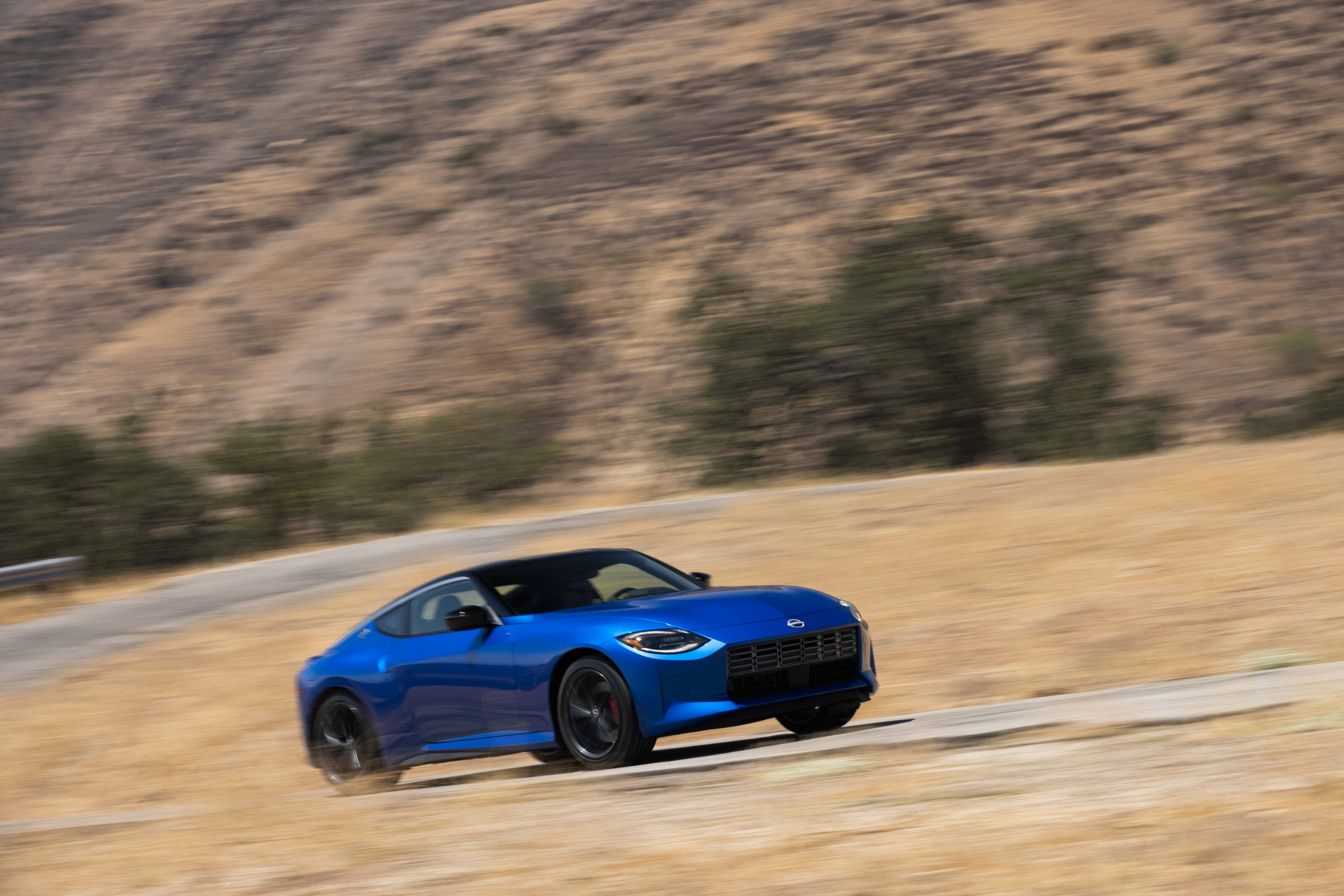
The bluff front end of the car retains the twin semi-circle LED lighting from the show car, which gives it a distinctive rear-view-mirror presence, that particular design cue coming from the Japanese market-only 240ZG longnose, while at the rear, the capsule graphic of the later Z32 300Z is reprised in 3D-effect LEDs, a shape also featured in the front grille.
Perhaps the most striking connection to the 240Z is in profile, where the roofline descends from the top of the windscreen, eventually meeting at the trailing edge of a belt line that’s lower than the front wheelarches.
The clever use of a chrome detail strip also gives the visual effect that the Z’s rear pillars are a good deal more delicate than they actually are.
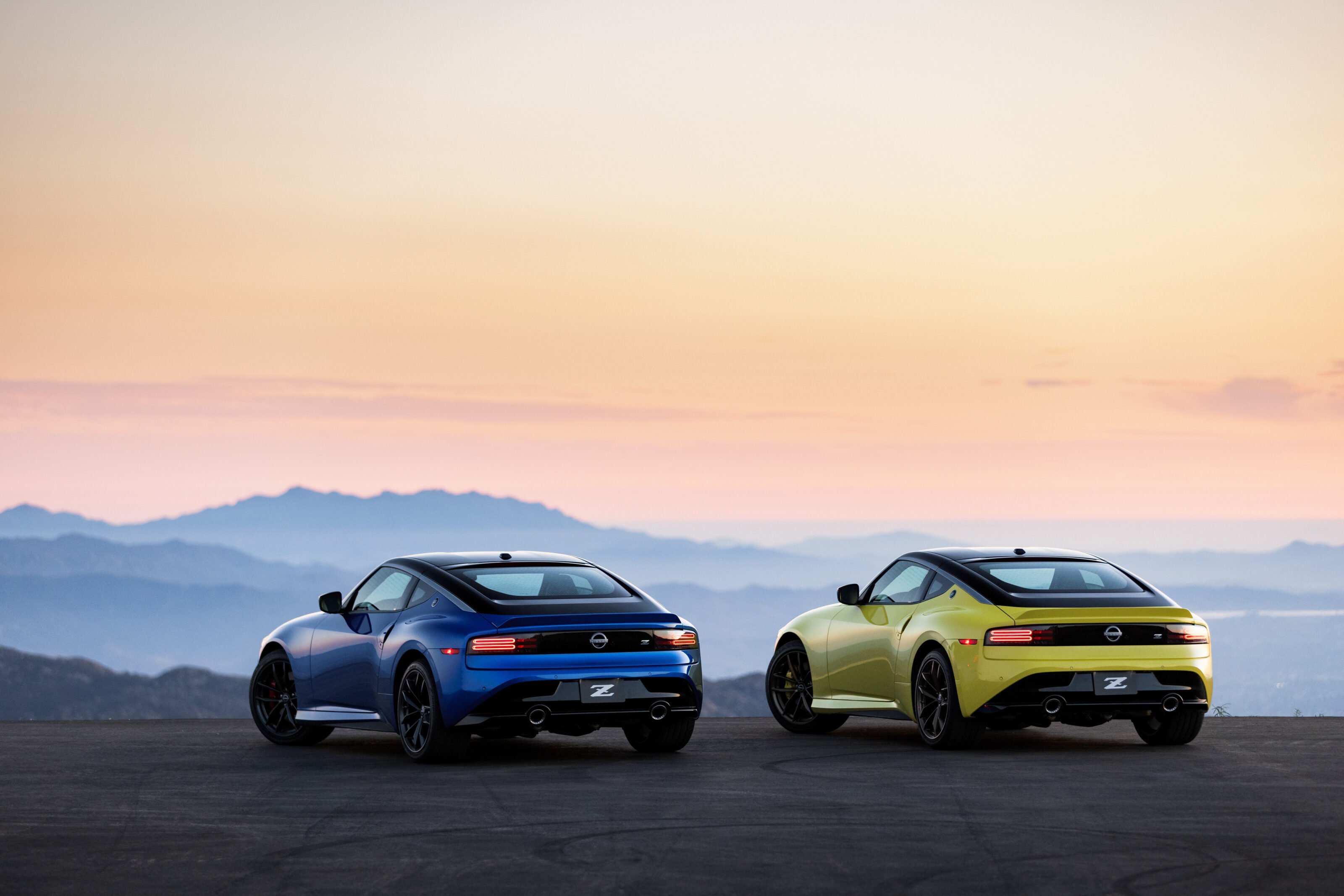
Inside, the cabin has come on a long way from the 370Z with a clean centre stack, three analogue gauges on the instrument binnacle, an 8.0-inch touchscreen, audio display in the centre and climate control switches behind the shift lever.
Nissan Super GT500 driver Tsugio Matsuda was employed to offer feedback on driver information settings for the 12.3-inch customisable digital meter.
This is a new fitment for the Z and can be shuttled through Normal, Enhanced and Sport settings, the latter prioritising the tacho and shift light, while also offering a boost gauge or G meter.
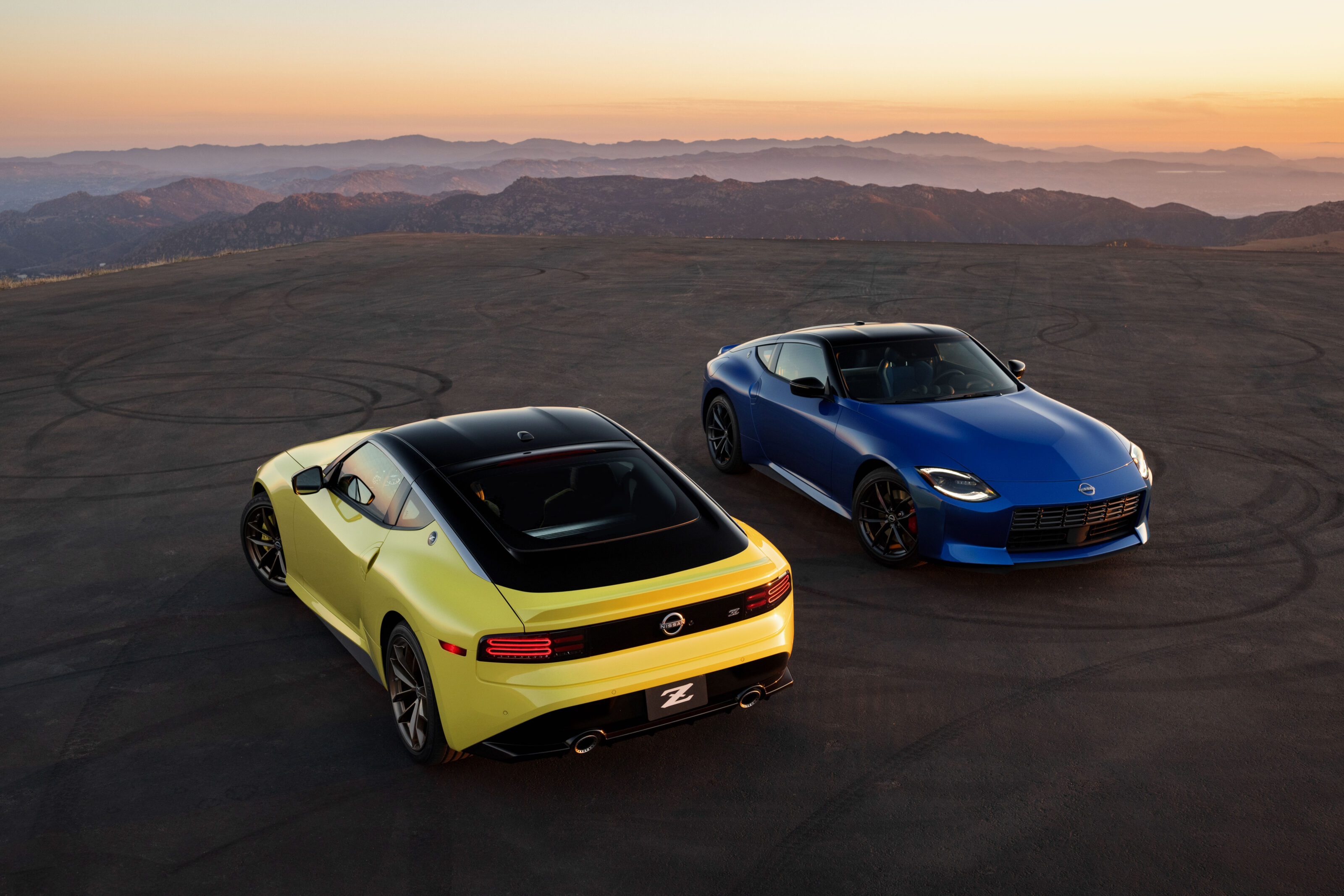
Nissan aimed for ‘a vintage aesthetic’ with the deeply dished steering wheel and suede on the backs of the bolstered sports seats, which will help keep the driver in position while exploiting cornering forces – claimed to be 13 per cent higher than the 370Z.
Nissan hasn’t overlooked convenience features in its quest for dynamics. The Z features refinements such as a push button start, adaptive cruise, rear view monitor, Type A and Type C USBs, Apple CarPlay and Android Auto mirroring – as well as front and rear sonar sensors.
The Performance model also adds a 9.0-inch touchscreen with navigation and – in some markets – a Wi-Fi hotspot. It also receives an eight-speaker Bose stereo with active noise cancellation tech.
The US market is being treated to a 240-car (get it?) run of the One special edition, celebrating the distinctive Z Proto first seen in 2020.
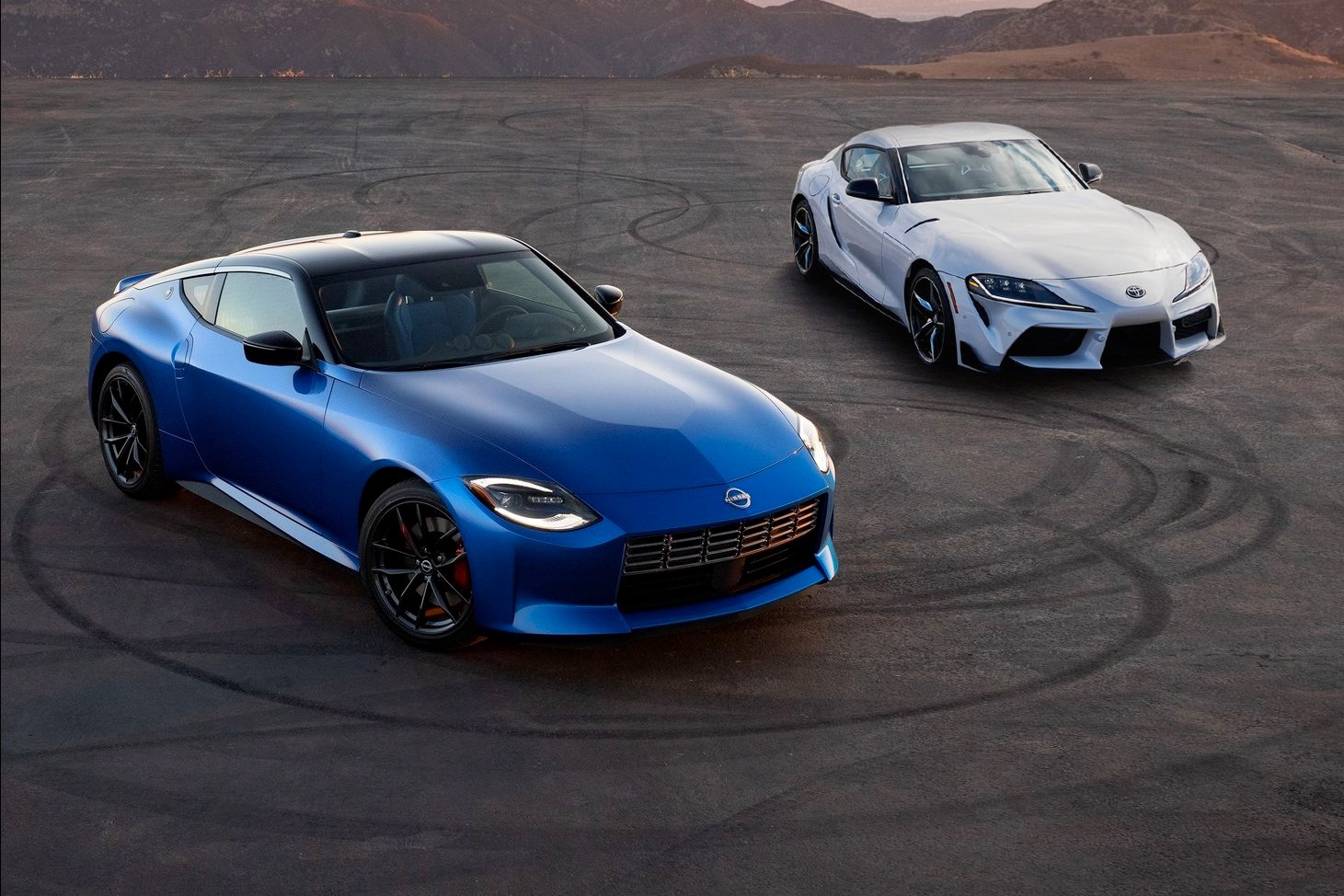
We recommend
-
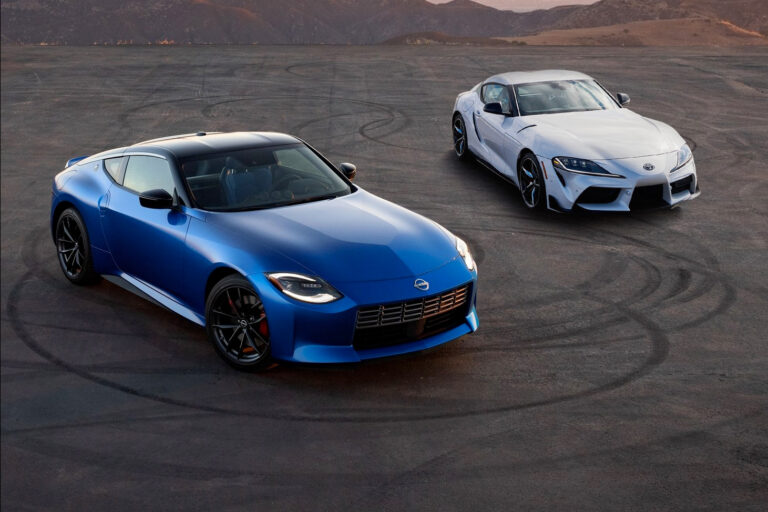 News
News2023 Nissan Z vs Toyota Supra: Hot coupes compared
How do the two flagship coupes stack up on paper?
-
 News
NewsNissan teases Z coupe ahead of August 17 reveal – update
Teaser videos released ahead of official reveal next week
-
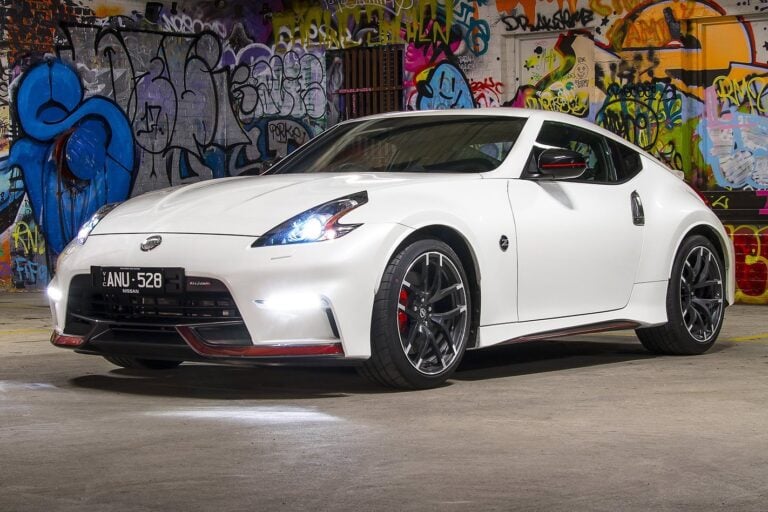 News
NewsThe next Nissan Z car: everything you need to know
Nissan talks about 370Z replacement and we're liking what we're hearing
-
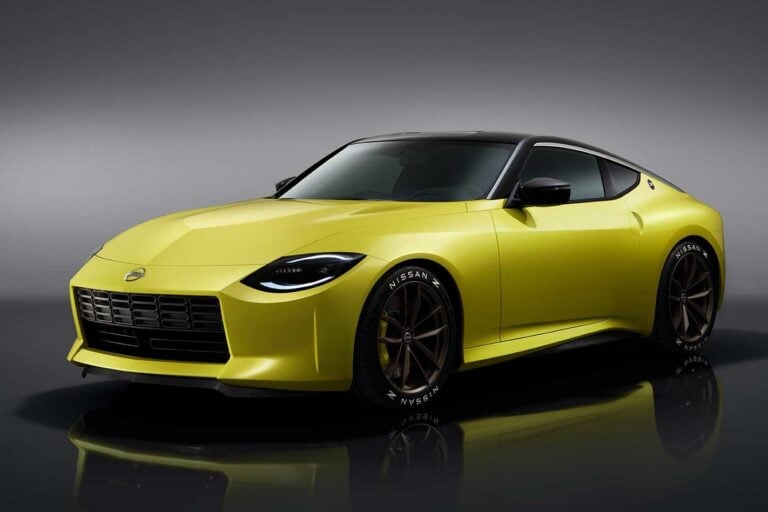 News
NewsThe Nissan Z Proto is a 300kW twin-turbo manual!
Despite the release of this Z Protoype, the next Nissan Z car is not expected until 2022 at best






